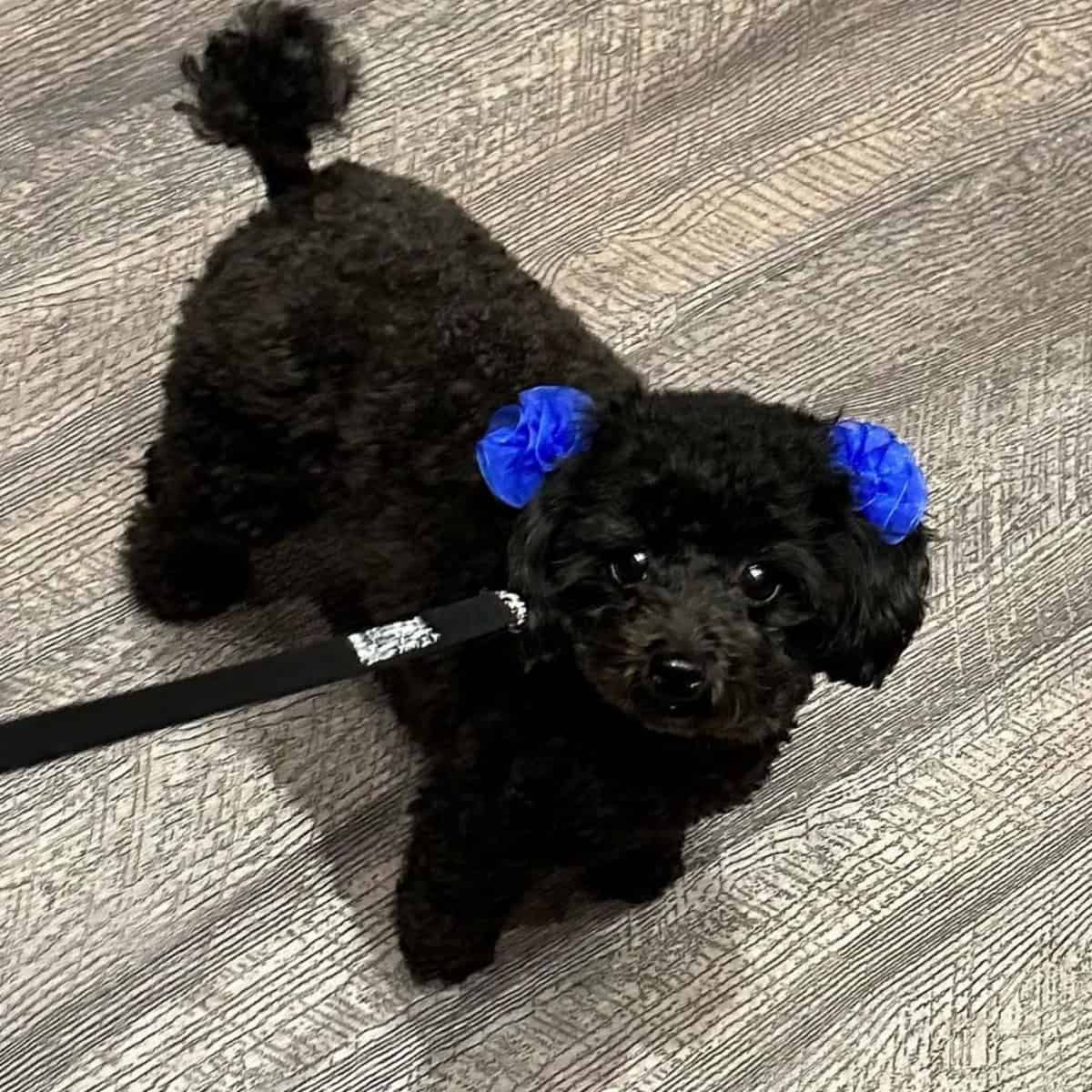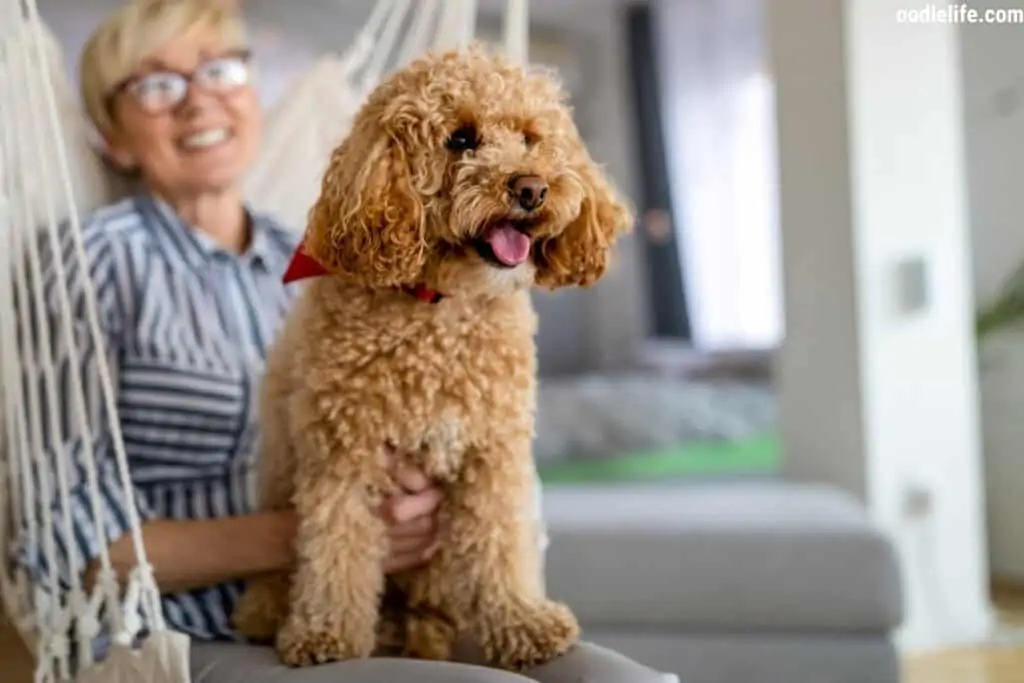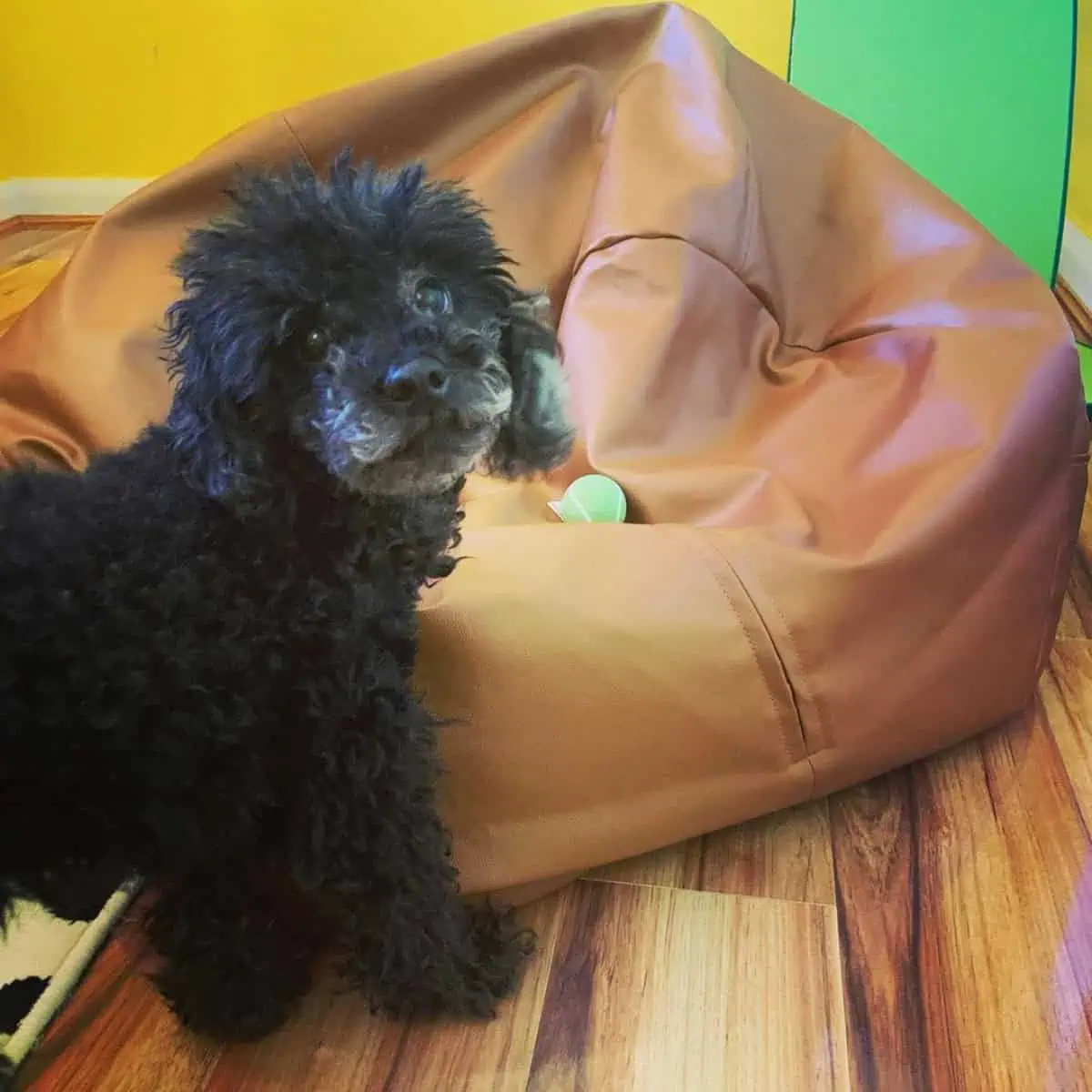How to Potty Train a Poodle Puppy? [Steps]
Bringing home a new poodle or poodle mix puppy home for the first time is thrilling. But, don’t let your excitement overshadow your plans for training.
If you’re a first-time pup parent, adapting to a consistent training routine can be overwhelming. But, we’re here to help you make the most of your puppy training, and the early days are some of the most important in developing your dog’s behaviors.
In this guide, we’ll explore poodle puppy potty training step by step. Read on to discover how to give your new puppy a consistent and foolproof potty routine.

1. Establish a Routine
New puppies, poodles especially, respond incredibly well to routines. While your routines can loosen up as your dog gets older, it’s imperative to create and maintain a strict schedule during your pup’s first few weeks at home.
Establish a routine that includes all of the following activities:
- Eating
- Training
- Playtime
- Alone time
- Potty breaks
Potty breaks are the most important item on your list, and at the beginning of your new pup’s life, they should be frequent and regimented. Set timers on your phone for every thirty minutes (yes, even at night), strap on your pup’s leash, and take them outside for a potty break.
Maintain this schedule for at least three weeks before decreasing the number of potty breaks. Establishing good habits takes time, but consistency will teach your pup to trust and depend on you.

2. Use a Leash
Using a leash during potty training kills two birds with one stone.
Using a leash will teach your pup where they’re allowed to go potty. But, you can also use these short sessions to reinforce leash training by giving treats for staying close, not pulling, and for walking in a straight line.
After three weeks of guiding your pup to ideal potty spots, they’ll naturally go there to do their businesses without a leash, in all likelihood.
Pro tip: Even if you have a fenced-in backyard, teach your dog to go potty along the fence line or near bushes. Pooping in low-foot traffic areas will save you (and houseguests) from stepping in poop in the future.

3. Reward and Reinforce
Whether you’re working on potty training, leash training, tricks, or obedience, good behavior and correct responses to commands should always be met with praise and reward.
Praise is easy: You can even use it to reinforce your dog’s name by saying “Good Clover!” or “Very good Daisy!” while you pat their head or rub their belly.
While praise is a reward in itself (your dog just wants to make you happy, after all), treats are an excellent motivator. Letting a pup see that there’s a treat in your hand will encourage them to do whatever it is that will get them a treat. Take advantage of the most natural animal instinct: “Will work for food.”

4. Test Your Training Away from Home
Once you start having accident-free days and nights at home (but before you start reducing the number of potty breaks or loosening your schedule), it’s time to take this show on the road.
Take your pup to a dog-friendly indoor place. Common dog-friendly locales include:
- Pet stores
- Hardware stores
- Farm supply and feed stores
- Breweries and wineries
Make sure to bring clean-up supplies in the event of an accident (poop bags, paper towels, and Clorox wipes). Let your pup relieve themselves outside before you go inside, walk your pup around the store (while reinforcing and rewarding good leash behavior), and take them back outside just in time for another potty break.
Teaching your pup that their home isn’t the only place where going potty inside will reduce the number of accidents away from home. Plus, you can get in some valuable leash training and socialization time.

Extra Tips for Potty Training Success
By following the steps above, you’ll hit the ground running with your poodle pup’s potty training. It’ll even help you tie in other important skills like good leash behavior and appropriate socialization.
In addition, here are some extra tips that will help you stay sane during your pup’s formative weeks.
Potty Pads are Your Friend
During the first few weeks of puppy parenthood, accidents are inevitable.
Just like human babies, puppies have small bladders, and one of the reasons why they should be out at least every thirty minutes in their youth is because they probably can’t hold it for much longer than that.
In the meantime, place potty pads in strategic locations around the house. Praise your pup when they use a potty pad, but don’t offer a reward. Save rewards for outside potty breaks to reinforce that, while using a potty pad is better than going on the floor, it’s not as good as going outside.

Use Training Treats
The American Kennel Club recommends that treats only makeup 10% or less of your pup’s daily calorie intake.
Regular treats can be high-calorie, and even cut into small pieces, they can still be pretty calorie-dense. To keep within the 10% rule while still generously giving treats during the potty training phase, use training treats.
Training treats are less calorie-dense than traditional treats, so you can use more generous amounts per day and still keep your pup’s calorie intake above board. You can even split training treats into smaller pieces: Your pup won’t even notice the difference.

Create and Maintain a Safe Space
Before you bring your pup home for the first time, make sure they have a safe space to sleep, get comfortable, eat, and play with their toys in peace.
Crate training is recommended (especially if you’re going to be leaving your dog home alone for extended periods in the future), and with the right introduction and reinforcement, your pup will grow to love their crate.
Put a soft bed and toys in their crate, and encourage them to enter it within the first hour that they’re home. Provide treats for going inside, and begin closing the door for short periods to acclimate them to the space.
As they get more and more comfortable in their crate, they’ll recognize it as a comfortable space, and won’t want to spoil it with pee or poop.

Practice Alone Time
Practice giving your pup alone time, and reward them after an extended period spent out of your sight if they don’t have an accident. While your new puppy will whine for the first few days of practice, they’ll slowly become more acclimated to being alone.
Make sure that you leave plenty of toys with them so that they have a distraction while you’re away. This early reinforcement is critical for:
- Preventing future separation anxiety
- Reinforcing that their crate is a safe space
- That being alone is okay
Start small: Leave your pup in their safe space for five minutes three times per day and at bedtime on the first day. Repeat this for a second day, and increase the sessions by five minutes every other day until your dog can calmly (and without accidents) stay in its crate for an hour.

Poodle Potty Training: The Most Important Lesson
Potty training is a multifaceted process that requires a significant time commitment. But, the time spent is worth every minute: After a few weeks of intensive training, your pup will be a seasoned master of outside potty breaks!